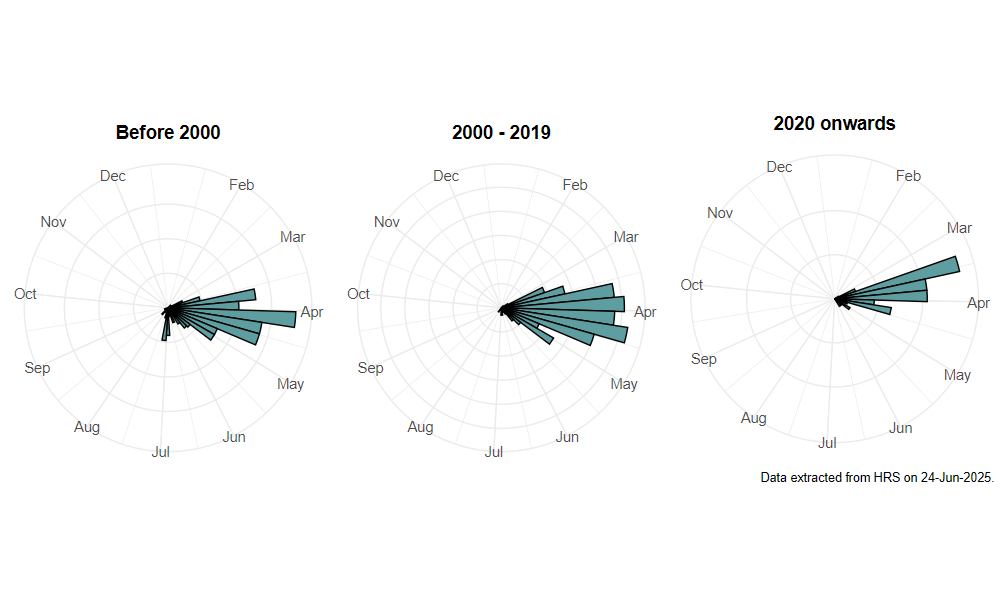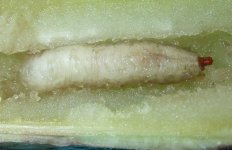Cheilosia albipila Meigen, 1838
Identification
Identification difficulty = 2. ![]()
![]() according to Ball & Morris, 20241
according to Ball & Morris, 20241
Biology
The larva tunnels the stems of Marsh Thistle Cirsium palustre and some other thistles. It does not cause the plant to develop multiple stems but may cause stems to thicken. The larvae leave the stem and pupate in the soil nearby, usually in mid-summer. Adults visit early spring-flowering shrubs such as Sallows Salix and females can occasionally be found sitting on Marsh Thistle rosettes.
Flight period
The following plots show the number of unique records per week excluding those reported to be of immature stages.

Distribution
This is a very widely distributed species that will probably prove to be more widespread than current records suggest. Adults fly rather early in the year and maybe overlooked. Our experience suggests that most upland sites in Scotland that support Marsh Thistle will yield this hoverfly if sought as larvae.

Trends
The following plots show the Frescalo TFactor vs year and a map of the rescaled frequency (all records) for the species.
-
Ball, S., & Morris, R. (2024). Hoverflies of Britain and Ireland. WILDGuides (3rd ed.). Oxford: Princeton University Press. ↩
